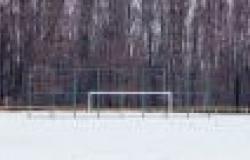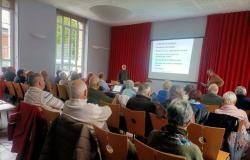Economy. The Chaumont Agglomeration, in partnership with the CCI Meuse Haute-Marne, is offering a day on November 25 dedicated to the digital transformation of local businesses. Artificial intelligence invites itself to the table of entrepreneurs, traders and the curious in Palestra.
The health crisis has worked to recognize the fact that digital technology, within the company, has become an essential partner. Digital practices, constantly evolving, need to be clarified and popularized. Digital day, built in partnership with the Agglo and the Meuse Haute-Marne Chamber of Commerce and Industry, intends to respond to this on Monday, November 25 in Palestra. Aimed at all audiences, particularly entrepreneurs and traders, the idea is to demystify the concrete contribution of artificial intelligence to the management of a business. Free up additional figures? Improve the customer experience? Digital day and its series of practical workshops, funding interventions and conferences will attempt to answer all the legitimate questions facing this new era of “all digital”.
Artificial intelligence in action
“AI is tools to save time and productivity, automation or analysis assistance which makes it possible to simplify invoicing, accounting, communications and even inventory management. When you know that the heaviest part of being a manager is administrative, nothing is negligible,” says Richard Papazoglou, president of the CCI Meuse Haute-Marne. “The other thing that is important to us is to provide specialists from the local ecosystem, digital professionals to help us get to know each other, break out of isolation, and create bridges and sparks. » For Stéphane Martinelli, president of the agglomeration, as for Richard Papazoglou, “Haute-Marne underestimates itself, carries an inferiority complex. We will never be a large urban center, but we know how to do it, we know how to undertake.”
A rich program, expert speakers
On the program, workshops to better understand automation and AI, explore electronic invoicing (already imposed on all public establishments, it becomes mandatory for companies on September 1, 2026), work on visuals social networks or even protect yourself from cyberattacks. Financing assistance advice will be provided throughout the day, culminating at 6:30 p.m. with an inspired and inspiring conference: “Artificial intelligence, prepare your business for the biggest technological revolution in the world.” the history of humanity.” Quite a program.
Elise Sylvestre
A conference by Stéphane Mallard
Considered a “digital evangelist”, Stéphane Mallard prophesied, in his bestselling book “Disruption – Artificial intelligence, end of wage labor, augmented humanity” released in 2018, the birth of ChatGPT, an AI which uses natural language processing to create a dialogue similar to that of humans, on a chosen subject. Not hesitating to be politically incorrect, Stéphane Mallard refuses banalities and tries to make people want the future, by offering the interlocutors the keys to prepare for the new world that is coming.






